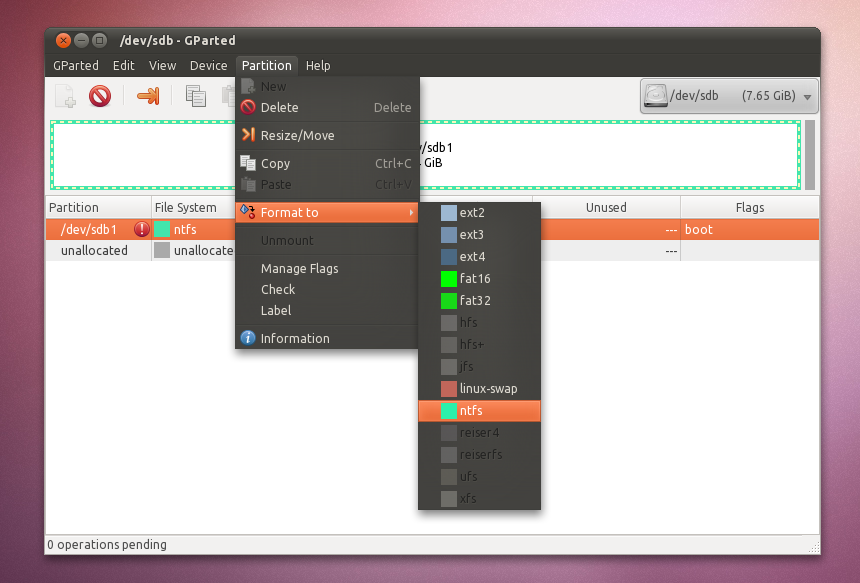
- #Create bootable gparted usb how to#
- #Create bootable gparted usb install#
- #Create bootable gparted usb software#
- #Create bootable gparted usb iso#
#Create bootable gparted usb iso#
*The newest iso is 071919 with Debian kernel 4.19.0-5-amd64, I have dropped the Xanmod kernels for now. To create a persistent storage live USB of Debian or Ubuntu using Rufus 3.7 or newer, select the ISO and a new Persistent partition size option will show up, with a slider that allows setting the persistent partition size. iso file (open iso with 7Zip) - often there will be \isolinux\*.cfg files or \grub\boot\*.cfg files which contain the ISO menu entries, e.g.
#Create bootable gparted usb install#
Double-check if the Linux distribution you are trying to install supports Live USB persistent or not. Credits 18 #2 I have not tried to make a "persistent" Debian USB, so I didn't know there was any issue or problem doing this.
#Create bootable gparted usb software#
UNetbootin (short for “Universal Netboot Installer”) is software that allows you to easily create bootable USB flash drives to install or use operating systems. Hit “Enter” key on first option to start MX Linux Live Session. USB persistent distros are those which can store user data in the USB flash drive so that on next boot all the software you have installed will not vanish like traditional USB Live sessions do. To create your live USB drive with persistent storage, click the lightning icon under “Step 5: Create”. (where count=512 is persistence size, with max size = 4GB). Mkusb Live installs also use ISO9660 file system, (which GParted won't modify), however mkusb can be downloaded to the Live USB and used to turn the Live USB into an excellent Persistent drive that uses casper-rw partitions of unlimited size.

Excellent! Tenho 3 pendrives com > Debian instalados, um para Debian Games em mate, outro para trabalho > em mate, outro com XFCE. Thank you for your support and don’t forget to share LiLi if you like it :-) ! I'm trying to create a persistent live Jessie system on my 8GB USB drive.

We share back our improvements with these projects so that many more people can benefit from our work. At this point, make sure you have the USB stick inserted in your system. After your up and running from your Debian Live created Flash Drive, do the following: (1) Select your USB device from the drop down in the upper right corner (2) Right Click the Unallocated Space and select New The existing answers and tutorials I've read haven't been of any help.
#Create bootable gparted usb how to#
How to make the Debian Live install Persistent: The following information was suggested by Leong Yu Siang. wish you happy festive days!! select go => Yes, I want to go ahead. There should be no warning message from E2B. AntiX Linux is well known for being one of the friendliest Linux distros for old hardware, with many people turning to this Linux distribution to get an ancient laptop up and running once more. Knoppix was first released 18 years ago as one of the first LiveCD distributions and has been in active development ever since and giving rise to similar initiatives such as DSL. I've read that this maybe an issue with Casper-rw (but that bug was rectified in Ubuntu, on which I believe bodhi is based.

At the same time, sometimes you want to save data from your tests, and a live USB won't cut it. Debian live usb persistent > ASSUNTO: Debian Live USB Persistente > Cara, então você não está falando de Live.


 0 kommentar(er)
0 kommentar(er)
